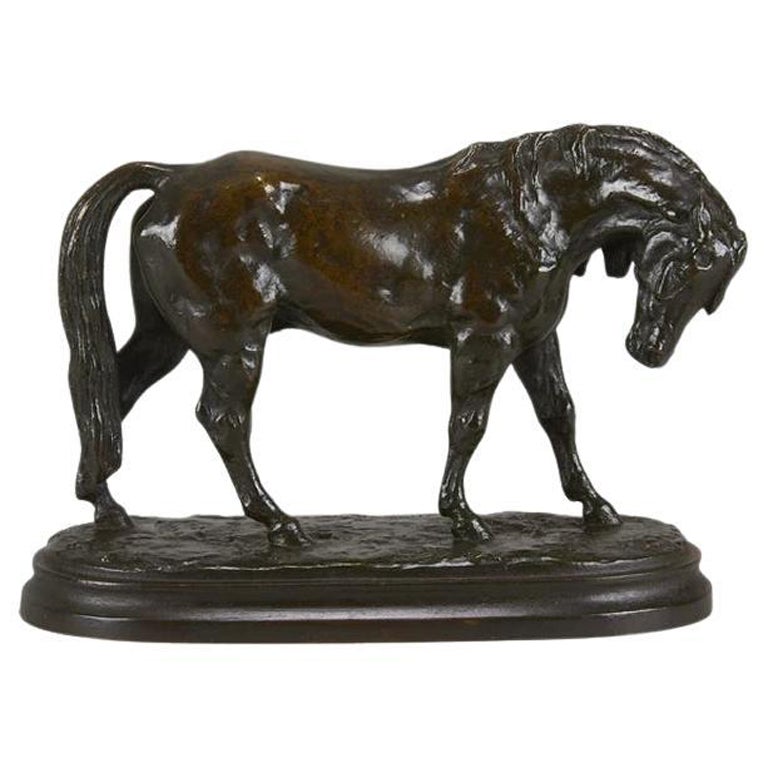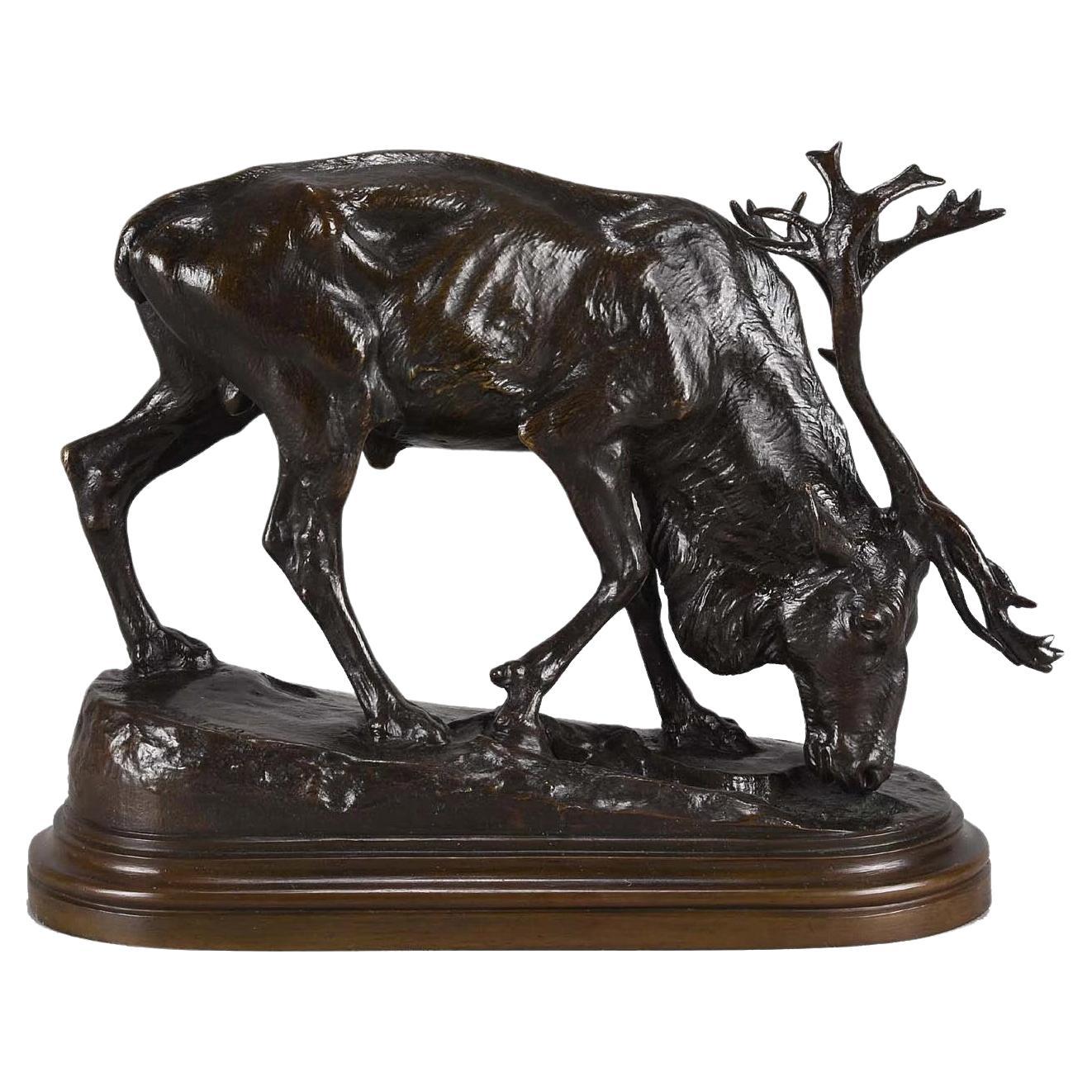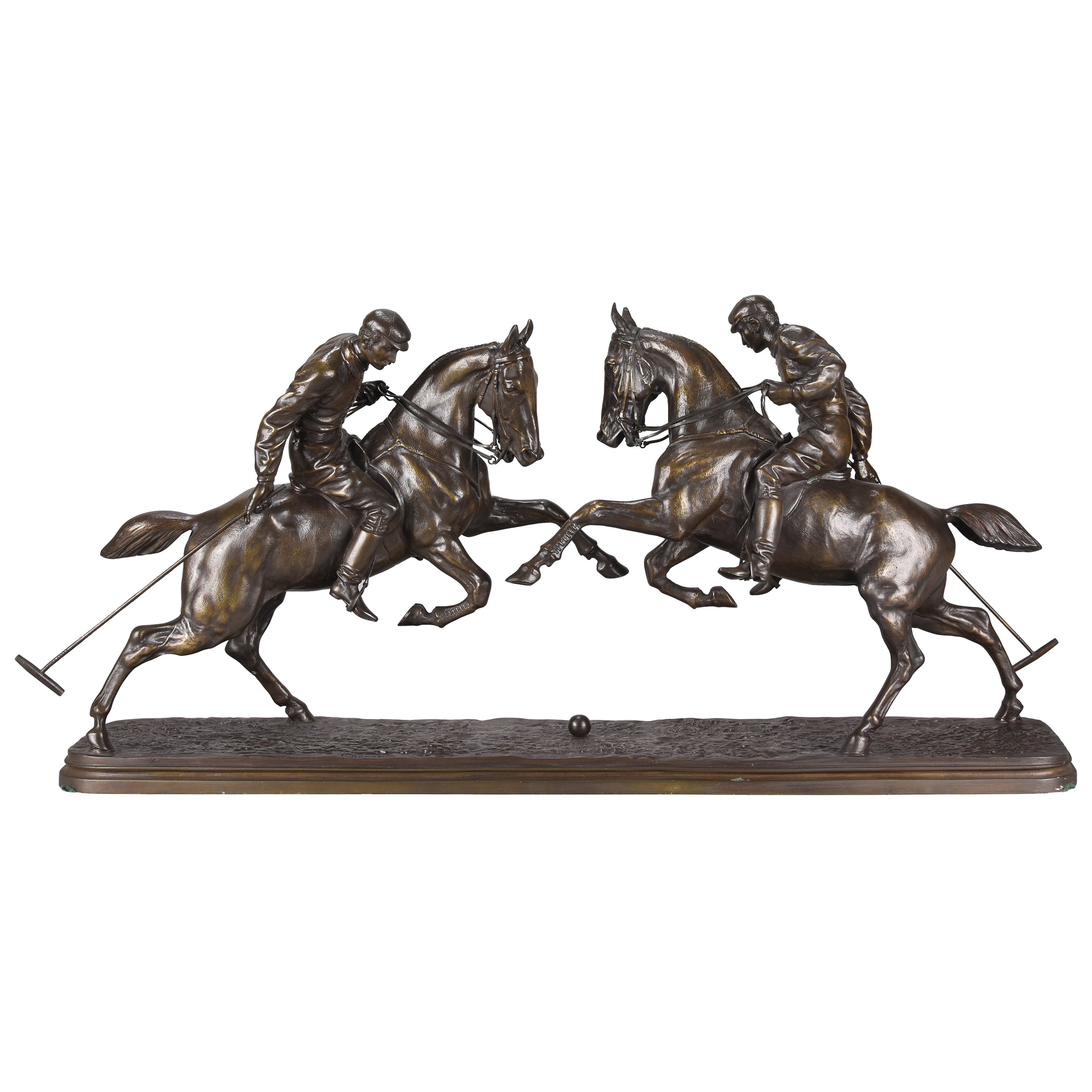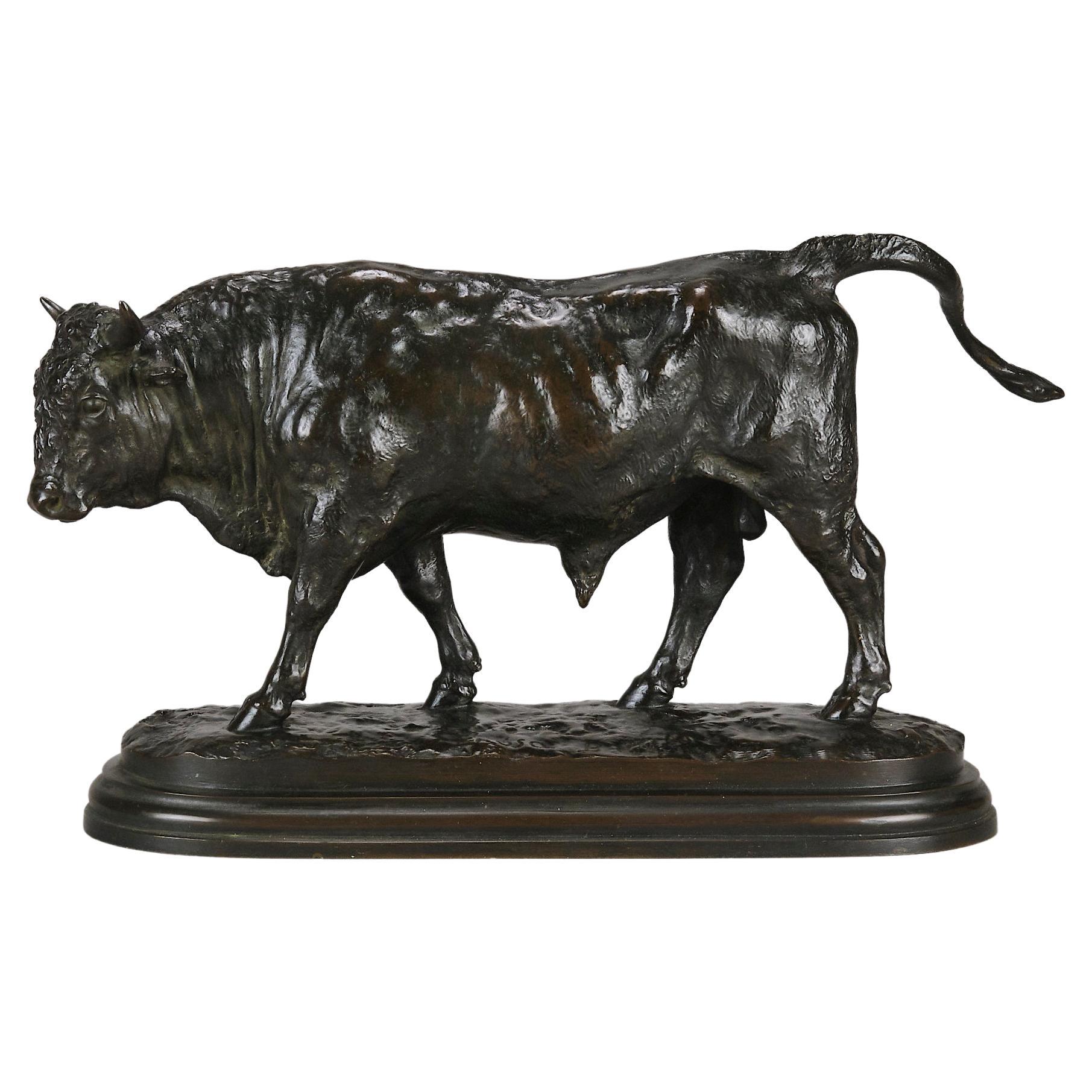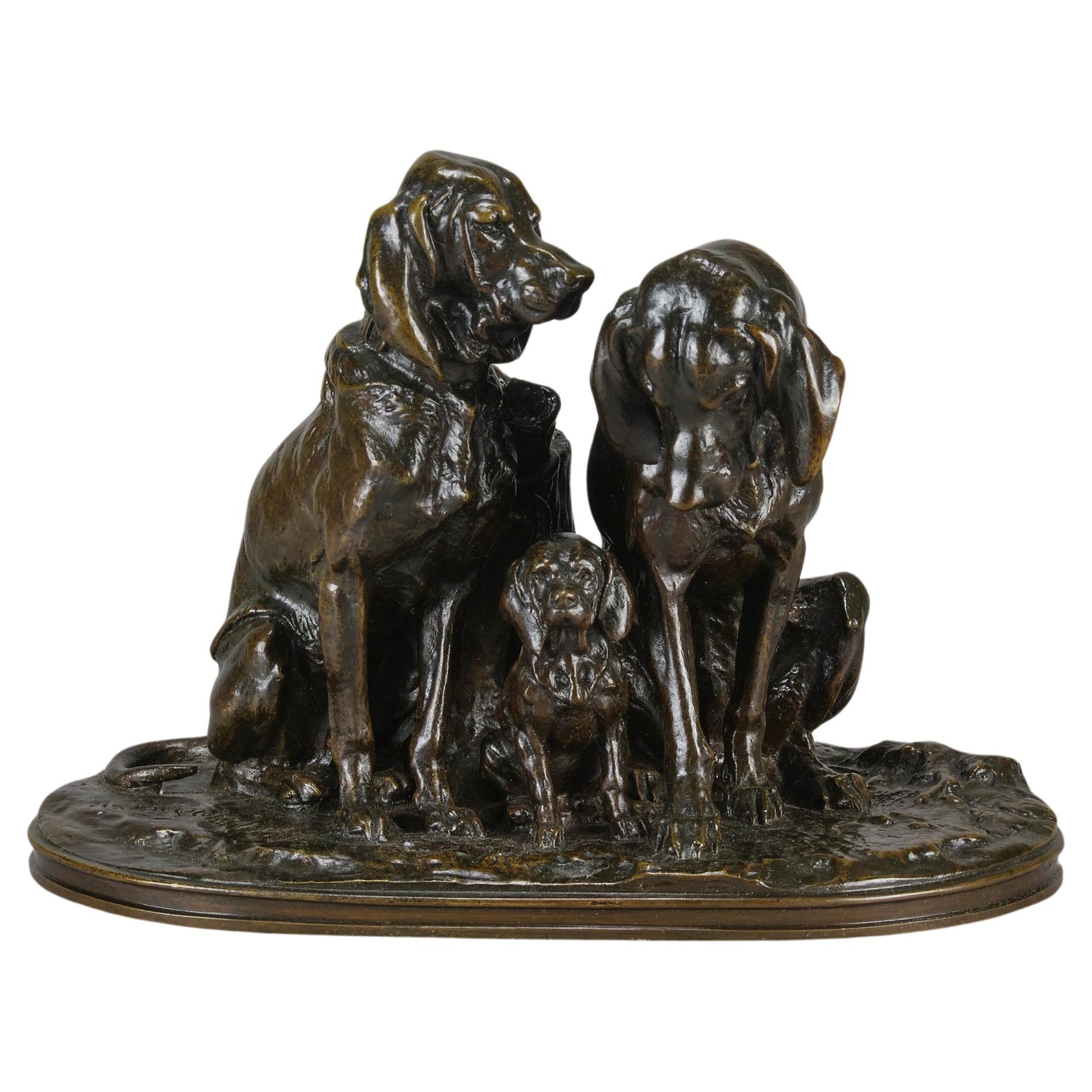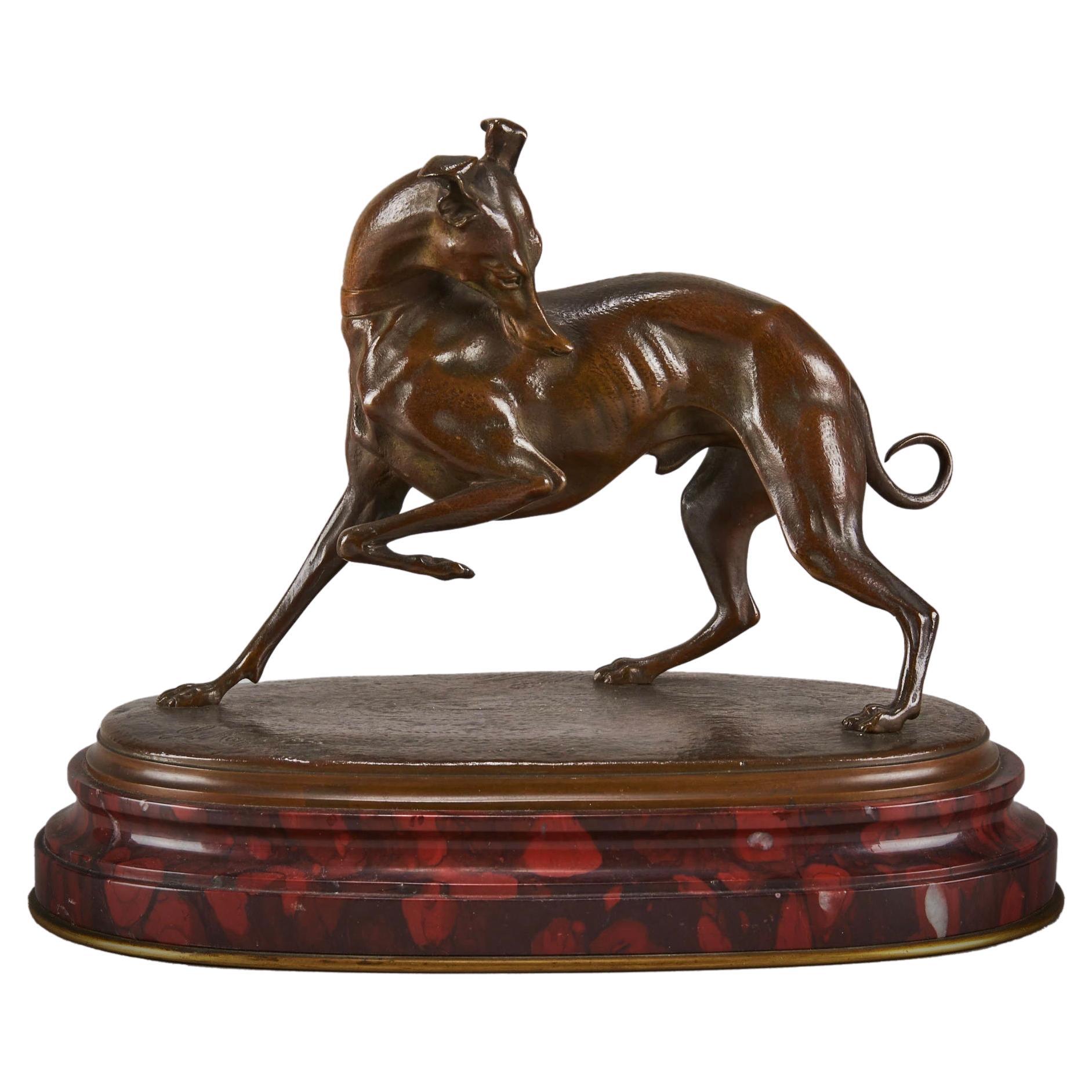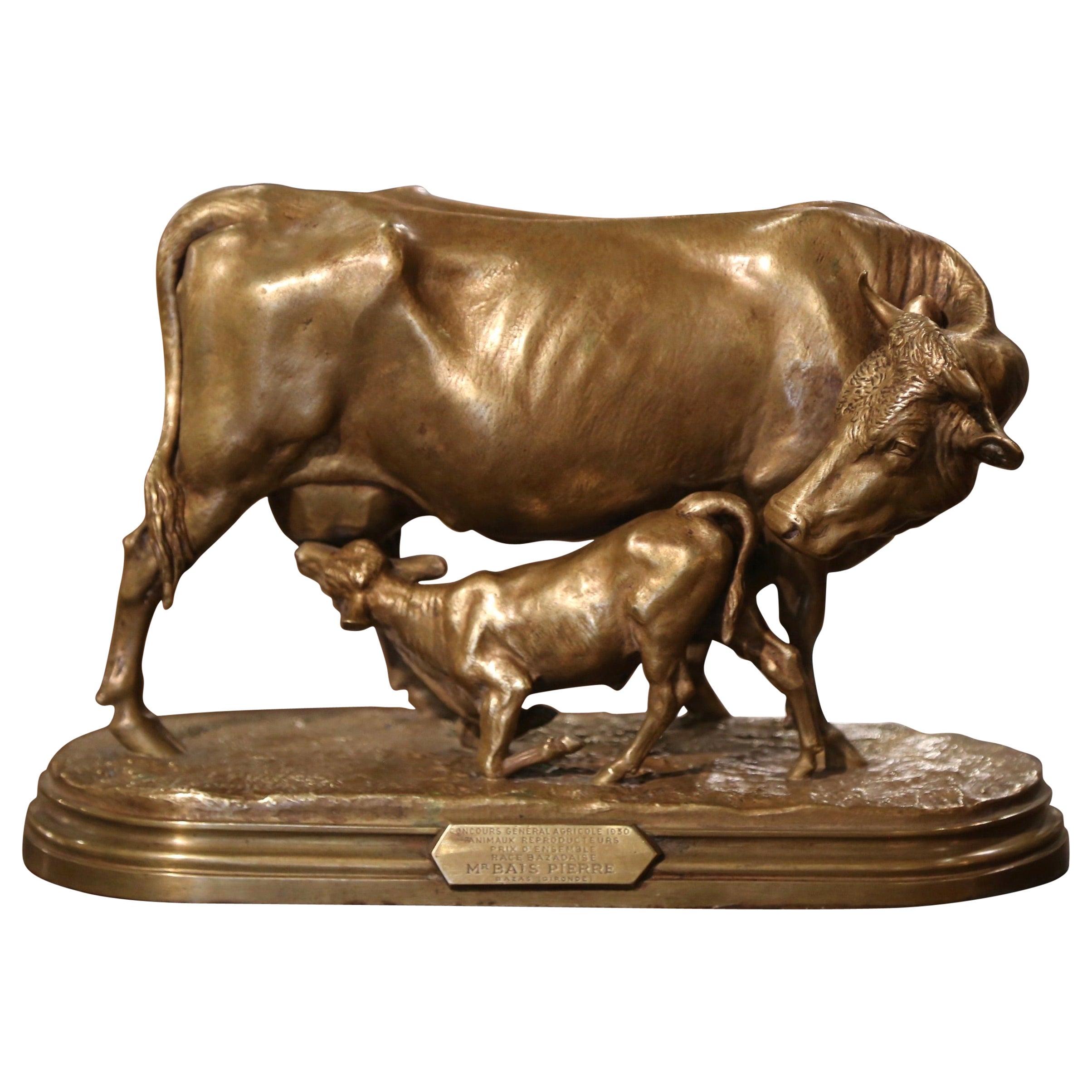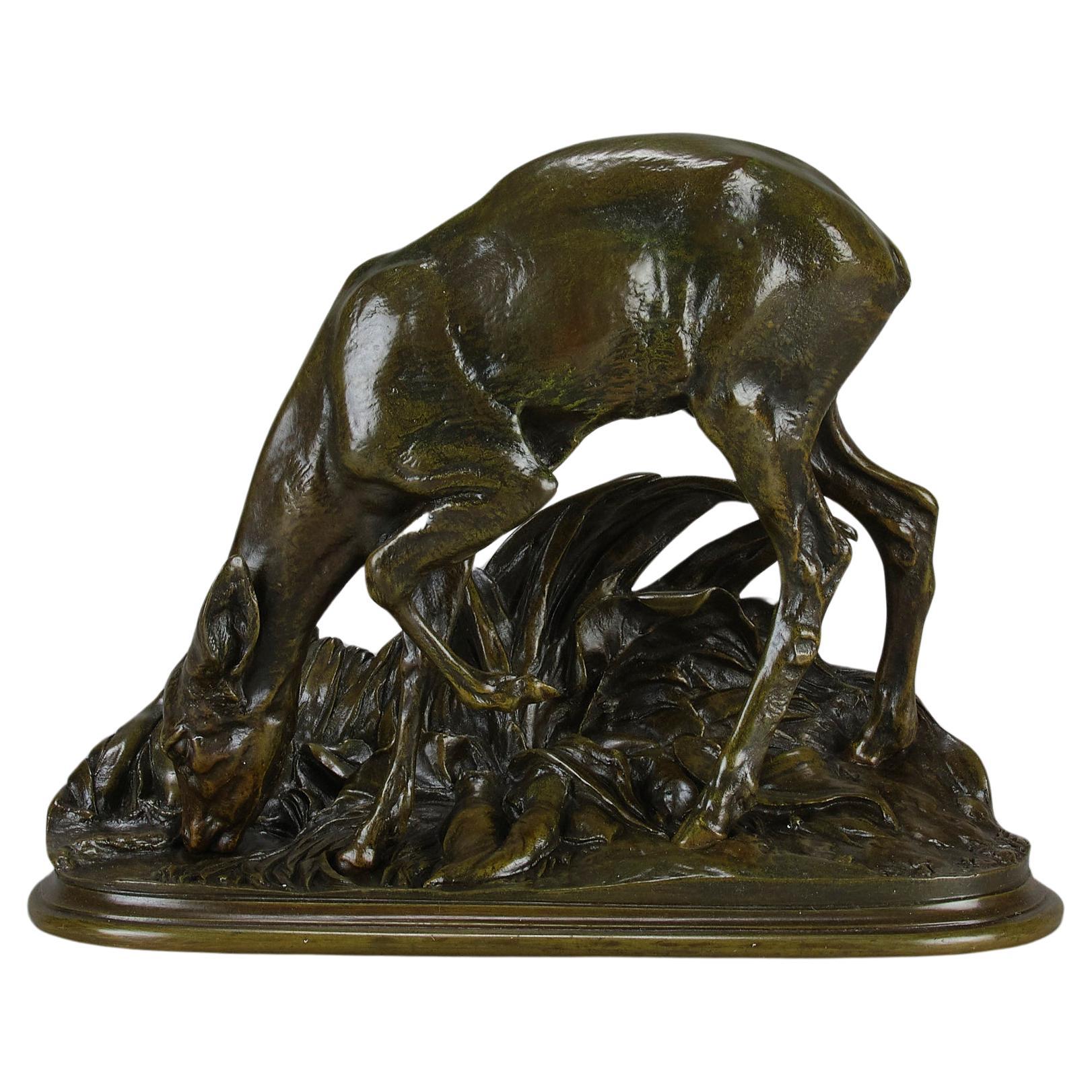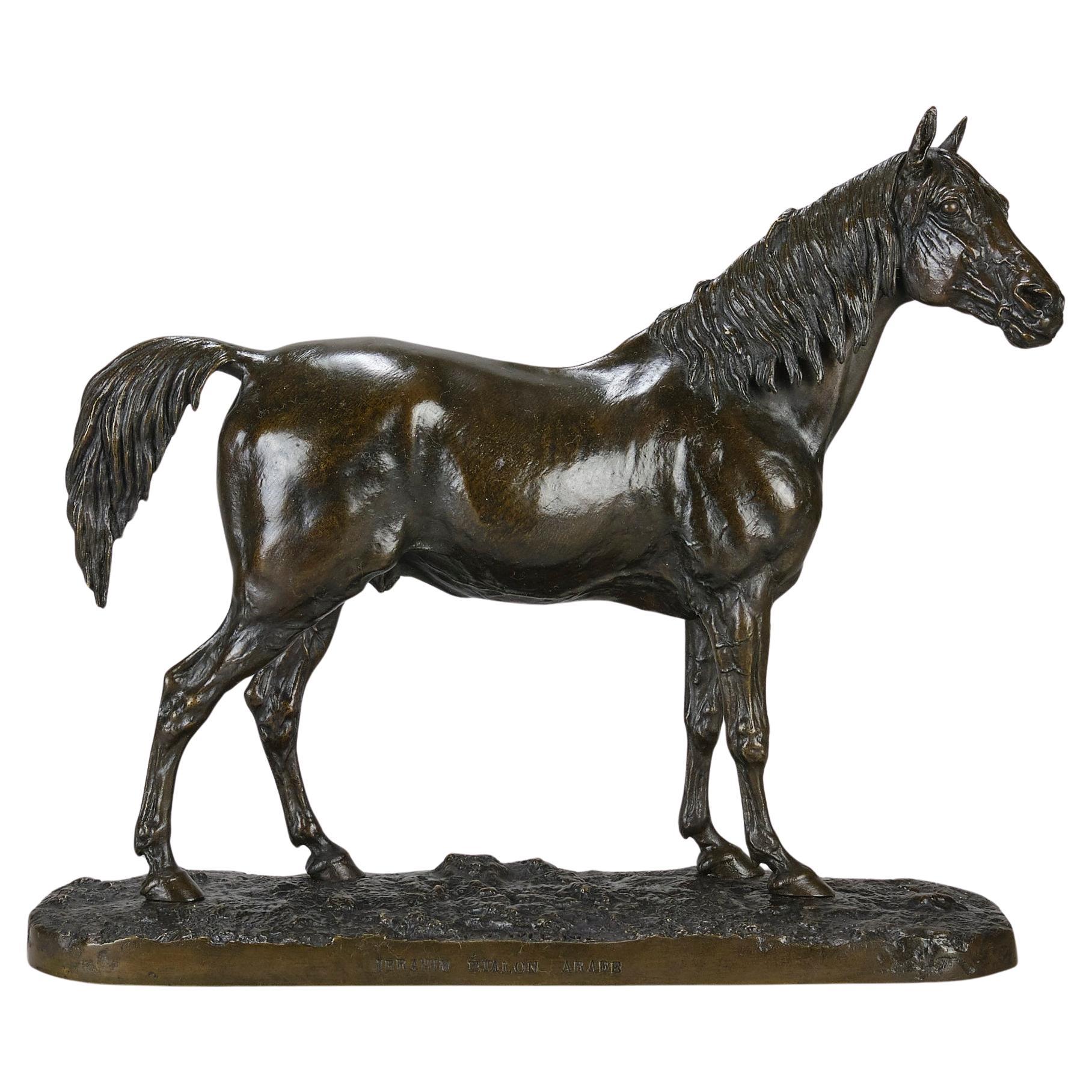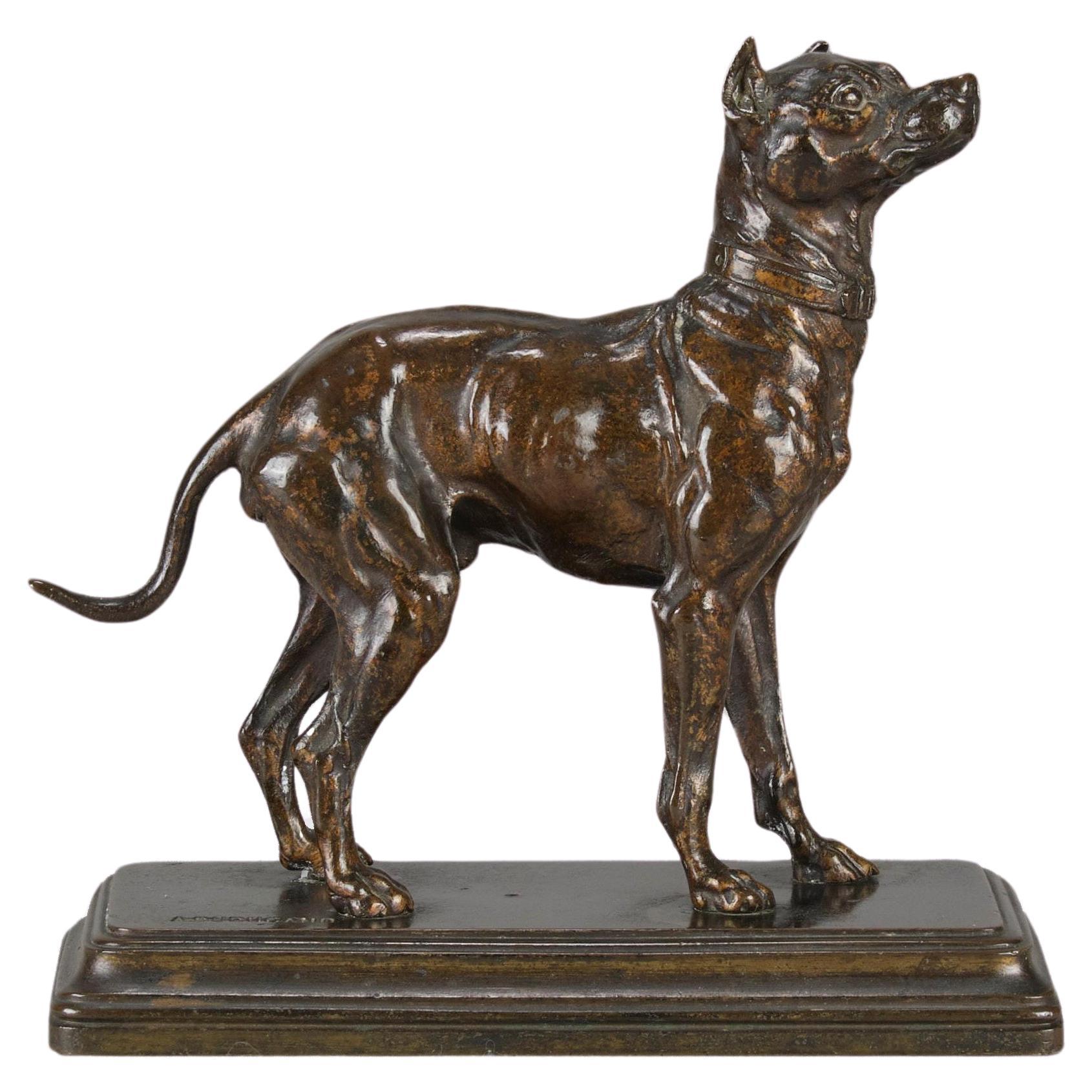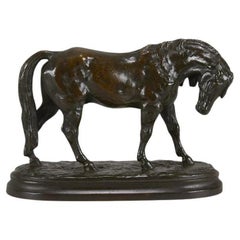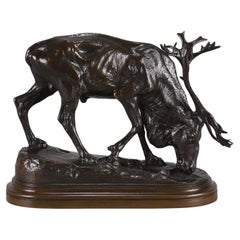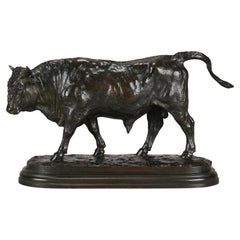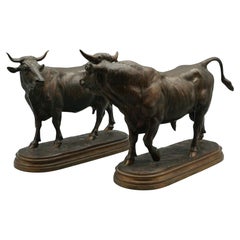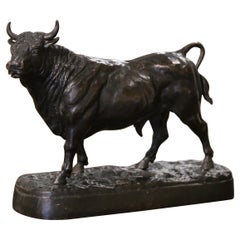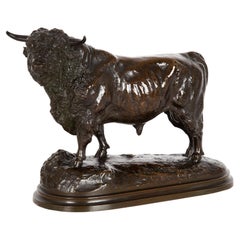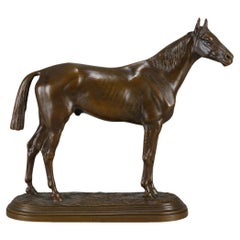
Late 19th Century Animalier Bronze entitled "Cheval Debout" by Isidore Bonheur
View Similar Items
Want more images or videos?
Request additional images or videos from the seller
1 of 13
Late 19th Century Animalier Bronze entitled "Cheval Debout" by Isidore Bonheur
About the Item
- Creator:Isidore Jules Bonheur (Artist)
- Dimensions:Height: 13.39 in (34 cm)Width: 14.97 in (38 cm)Depth: 4.73 in (12 cm)
- Style:Art Nouveau (Of the Period)
- Materials and Techniques:
- Place of Origin:
- Period:
- Date of Manufacture:1870
- Condition:Wear consistent with age and use.
- Seller Location:London, GB
- Reference Number:Seller: 90631stDibs: LU3216337801682
About the Seller
5.0
Gold Seller
Premium sellers maintaining a 4.3+ rating and 24-hour response times
Established in 1936
1stDibs seller since 2017
75 sales on 1stDibs
Authenticity Guarantee
In the unlikely event there’s an issue with an item’s authenticity, contact us within 1 year for a full refund. DetailsMoney-Back Guarantee
If your item is not as described, is damaged in transit, or does not arrive, contact us within 7 days for a full refund. Details24-Hour Cancellation
You have a 24-hour grace period in which to reconsider your purchase, with no questions asked.Vetted Professional Sellers
Our world-class sellers must adhere to strict standards for service and quality, maintaining the integrity of our listings.Price-Match Guarantee
If you find that a seller listed the same item for a lower price elsewhere, we’ll match it.Trusted Global Delivery
Our best-in-class carrier network provides specialized shipping options worldwide, including custom delivery.More From This Seller
View AllFrench Animalier Bronze Study Entitled 'Cheval Debout' by Isidore Bonheur
By Isidore Jules Bonheur
Located in London, GB
Fabulous late 19th Century French Animalier bronze study of a standing horse with wonderful rich dark brown lightly rubbed to mid/golden brown patina and excellent crisp surface detail, raised on a stepped integral base, signed I Bonheur
ADDITIONAL INFORMATION
Height: 13 cm
Length: 19 cm
Condition: Excellent Original Condition
Circa: 1870
Materials: Bronze
Book Ref Animals in Bronze by Christopher Payne Kjellberg
Page no. 177
SKU: 8526
DESCRIPTION
Isidore Bonheur
Bonheur Cheval– Isidore Bonheur (1827 ~ 1901) was born on May 15th 1827 in Bordeaux, France, and died in Paris in 1901. He was an important Animalier sculptor, the brother of Rosa Bonheur, and brother-in-law to Hippolyte Peyrol the founder. The Bonheurs were a well known family of painters, sculptors and artists. Isidore studied painting under the tutelage of his father at a very early age. He moved on to sculpture in 1848 with his first Salon entry of a plaster study of An African Horseman attacked by a lion. Isidore Bonheur continued exhibiting his sculpture throughout the years, both at the Salon in Paris as well as the Royal Academy in London. He won medals at the Salon in 1865 and 1869, and won the Gold Medal at the Paris Exposition Universelle of 1889. Bonheur was awarded the Legion of Honneur in 1895.
Isidore Bonheur’s bronzes range from domestic cattle and sheep, which he excelled at, to wild bears and lions as well as equestrian and hunting groups, all done in a very natural and realistic manner. His Le Grand Jockey...
Category
Antique Late 19th Century French Victorian Animal Sculptures
Materials
Bronze
19th Century Animalier Bronze Sculpture Entitled "Reindeer" by Isidore Bonheur
By Isidore Jules Bonheur
Located in London, GB
Excellent late 19th century animalier bronze study of a feeding reindeer with rich brown colour and very fine hand chased and etched surface detail, raised on a stepped naturalistic base, stamped with Peyrol Foundry mark and signed Isidore Bonheur
Additional information
Height: 16 cm
Width: 22 cm
Condition: Excellent Original Condition
Foundry: Peyrol
circa: 1880
Materials: Bronze
SKU: 8211
DESCRIPTION
Isidore Bonheur
Isidore Bonheur, born in Bordeaux May 15 1827. Isidore was the third child of Christine Dorotheé Sophie Marquis (1797–1833), a musician, and Oscar-Raymond Bonheur (1796–1849) (a landscape and portrait painter and an early adherent of Saint-Simonianism, a Christian-socialist sect that promoted the education of women alongside men). Isidore was the brother of Auguste Bonheur...
Category
Antique Late 19th Century French Art Nouveau Animal Sculptures
Materials
Bronze
19th Century Bronze Sculpture Entitled "Polo Players" by Isidore Bonheur
By Isidore Jules Bonheur
Located in London, GB
A fabulous late 19th Century animalier bronze group of two opposing polo players on their eager ponies going for the ball with excellent hand chased surface detail and good colour, raised on a stepped naturalistic base and signed I Bonheur
Additional Information
Height: 32 cm
Width: 67 cm
Condition: Excellent Original Condition
Circa: 1880
Materials: Bronze
About
Isidore Bonheur
Isidore Bonheur, born in Bordeaux May 15 1827. Isidore was the third child of Christine Dorotheé Sophie Marquis (1797–1833), a musician, and Oscar-Raymond Bonheur (1796–1849) (a landscape and portrait painter and an early adherent of Saint-Simonianism, a Christian-socialist sect that promoted the education of women alongside men). Isidore was the brother of Auguste Bonheur...
Category
Antique 19th Century French Art Nouveau Animal Sculptures
Materials
Bronze
19th Century Animalier French Bronze Entitled "Taureau Debout" by Rosa Bonheur
By Rosa Bonheur
Located in London, GB
"Taureau Debout" by Rosa Bonheur.
An excellent late 19th Century French animalier bronze study of a standing bull with fine hand chased surface that accentuates the muscle definition of the subject, signed Rosa B.
ADDITIONAL INFORMATION
Measures: Width: 32 cm
Height: 18 cm
Depth: 11cm
Condition: Excellent Original Condition
Circa: 1870
Materials: Bronze
Book reference: Animals in Bronze by Christopher Payne
Page no. 174
DESCRIPTION
Bonheur, Rosa (1822-1899)
The most popular artist of nineteenth-century France, Rosa Bonheur was also one of the first renowned painters of animals and the first woman awarded the Grand Cross by the French Legion of Honor. A professional artist with a successful career, Bonheur lived in two consecutive committed relationships with women.
Born on March 16, 1822 in Bordeaux, Marie Rosalie Bonheur was the oldest of the four children of Raimond Oscar Bonheur (1796-1849) and Sophie Marquis. Bonheur's father was an art teacher who came from a poor family, while her mother, a musician, had descended from a middle-class family and had been her husband's art student.
Bonheur's father, who taught drawing and landscape painting, was an ardent member of the utopian Saint Simeon society.
The group held idealistic beliefs about the reform of work, property, marriage, and the role of women in society. Most importantly, for the artist's future, the Saint Simeons questioned traditional gender norms and firmly believed in the equality of women. While teaching artistic techniques to his oldest daughter, Raimond Bonheur also encouraged her independence and taught her to consider art as a career.
In 1828 Raimond Bonheur joined the Saint Simeons at their retreat outside Paris. Sophie and the children joined him in Paris the following year. Four years later, however, Raimond abandoned his family to live in isolation with his fellow Saint Simeons.
Sophie Bonheur died in 1833 at the age of thirty-six. Rosa was only eleven years old when her mother died, but she was aware of the heavy price her mother paid for married life with a man who was more dedicated to his own ideals than to meeting his family's needs. Rosa also saw that her mother's marriage led to poverty and her death from exhaustion.
After her mother's death, Bonheur was taken in by the Micas family who resided nearby. Mme Micas and Bonheur's mother had been friends. When Mme Bonheur died, the Micas family paid Raimond Bonheur's debts and cared for Rosa. Their daughther, Nathalie, who would later become an amateur inventor and unschooled veterinarian, and Rosa became enamored with each other.
When Rosa Bonheur began her career as a professional artist, she had already been trained by her father who had allowed her to study in all male classes. Rosa also learned by sketching masterworks at the Louvre from the age of fourteen, and later, by studying with Léon Cogniet.
From the very beginning, Bonheur's favorite subject was animals. She learned their anatomy completely by dissecting them in local slaughterhouses. She also visited the horse market two times a week. Study of animals by direct observation led to the formation of the realist style in which Bonheur worked.
It was for such work that Bonheur obtained written permission from the French government to wear men's slacks. Her working attire also consisted of a loose smock and heavy boots that protected her feet from the dangerous environment in which she painted. The style of dress that the artist adopted for work and home may well have been influenced by her father's attire, which was based on St. Simeonian clothing experiments. Bonheur also cropped her hair, perhaps to facilitate her work. She did, however, always wear dresses for social occasions because she knew that appropriate dress would further her career.
Bonheur earned a successful living as a painter of animals. She exhibited at the annual Paris Salon regularly from the age of nineteen in 1841 through 1853, when she was thirty-one. She won the salon's gold medal at the age of twenty-six in 1848 and was commissioned by the French government to paint Plowing on the Nivernais in 1849. In the same year Bonheur and her sister Juliette became directors of l'École gratuite de dessin pour les jeunes filles, a post their father had once held.
Bonheur completed her most renowned work, The Horse Fair, in 1855. The successful representation of percherons (a breed native to Normandy) was purchased by Ernest Gambart, a London art dealer whose gallery specialized in work by French artists. He exhibited The Horse Fair in London where Bonheur visited with Nathalie. Queen Victoria requested a private viewing of the painting at Windsor Castle. It would later be purchased in 1887 by Cornelius Vanderbilt and donated to the new Metropolitan Museum of Art in New York City.
Bonheur's trip to England allowed her to meet Charles Eastlake, then President of the Royal Academy, John Ruskin, the English writer and critic, and Edwin Landseer, the British animalier. She also toured the English and Scottish countrysides and executed some paintings based on her observations of new breeds of animals found there.
Gambart made engravings of Bonheur's work, including The Horse Fair, and sold them in England, Europe, and the United States. Bonheur became one of the most renowned painters of the time. Little girls, such as Anna Klumpke in the United States, even had dolls in her likeness, much as American girls played with Shirley Temple dolls...
Category
Antique 19th Century French Art Nouveau Animal Sculptures
Materials
Bronze
Late 19th Century Animalier Bronze entitled "Hound Family" by Alfred Jacquement
Located in London, GB
A charming late 19th Century French animalier bronze group of a family of hounds. The bronze of three seated dogs including a mother, father and pup exhibiting excellent rich brown p...
Category
Antique Late 19th Century French Art Nouveau Animal Sculptures
Materials
Bronze
Late-19th Century French Animalier Bronze Entitled "Turning Whippet" by L Mayer
By Louis Mayer
Located in London, GB
Delightful late19th century French Animaliers bronze study of a turning whippet looking around in an attitude to play, with rich brown colour and fine hand chased surface detail. Sig...
Category
Antique 19th Century French Art Nouveau Animal Sculptures
Materials
Marble, Griotte Marble, Bronze
You May Also Like
19th Century French Gilt Bronze Cow and Calf Sculpture Signed Isidore Bonheur
By Isidore Jules Bonheur
Located in Dallas, TX
This antique cow sculpture composition was created in France, circa 1895. Set on an oval base, the bronze sculpture features a standing cow looking at its baby calf suckling milk. Th...
Category
Antique Late 19th Century French Animal Sculptures
Materials
Bronze
Mid 19th Century Bronze Sculptures of a Bull and Cow by Isidore Bonheur C1865
By Isidore Jules Bonheur
Located in Forest Row, East Sussex
A pair of Bronze sculptures by Isidore Bonheur (1827-1901) depicting a striding Bull and standing cow. Excellent rich brown patination. Signed to base with peyrol foundry stamp to bo...
Category
Antique Mid-19th Century French Animal Sculptures
Materials
Bronze
Early 20th Century French Bronze Bull Sculpture After Isidore Bonheur
By Isidore Jules Bonheur
Located in Dallas, TX
This antique bull sculpture was created in France, circa 1920. Set on a comforming oval base, the patinated bronze features a standing bovine in the manner of Isidore Bonheur. The bu...
Category
Early 20th Century French Animal Sculptures
Materials
Bronze
French, Antique Bronze Sculpture of Aberdeen Angus Bull by Isidore Bonheur
By Isidore Jules Bonheur
Located in Shippensburg, PA
ISIDORE JULES BONHEUR
French, 1827-1901
Taureau Aberdeen-Angus" (Standing Aberdeen-Angus Bull)
Patinated sand-cast bronze Signed to base "I. BONHEUR"
Item # 211HDB17Z
An exquisite and very rare casting of an Aberdeen-Angus bull, an unusual and distinctive breed of cattle from Scotland, this sculpture by Isidore Jules Bonheur is almost without a doubt cast by the foundry of his brother-in-law Hippolyte Peyrol and a rather early model as well in light of the distinctive construction method. In her text on the selection of 46 animal bronzes in the collection of the Georgia Museum of Art, Eleanor Luciano notes regarding this model that "Bonheur is never recorded to have been to Scotland, where he would have seen this unusual breed. Rosa Bonheur painted in Scotland, and its seems likely that Isidore would have drawn the idea for this bull either from one of her sketches or from an agricultural show in France. The animal's rich mane and strong modeling make this one of the most successful." Notable is the very fine surface patination which exhibits a glassy finish with a complex range of colors presenting in the body of the bull, overall being medium brown but augmented with an underlying reddish hue against auburn highlights. The base is signed "I. BONHEUR" in the typical manner.
Museum Collections:
* National Gallery of Art, Washington DC, acc. no. 2006.128.3
* Georgia Museum of Art, University of Georgia...
Category
Antique 19th Century French Romantic Animal Sculptures
Materials
Bronze
French Antique Bronze Sculpture “Striding Bull” after Isidore Jules Bonheur
By Isidore Jules Bonheur
Located in Shippensburg, PA
ISIDORE JULES BONHEUR [after]
French, 1827-1901
Striding Bull
Patinated bronze signed in naturalistic base "I. BONHEUR" cast posthumously circa 1930-40
Item # 406THY02D
A hands...
Category
20th Century French Romantic Animal Sculptures
Materials
Bronze
$5,680 Sale Price
20% Off
French Antique Bronze Sculpture of “Standing Ram”, Isidore Jules Bonheur
By Isidore Jules Bonheur
Located in Shippensburg, PA
ISIDORE JULES BONHEUR
French, 1827-1901
"Standing Ram"
Patinated bronze sand-cast ca. 1870 signed to base "I. BONHEUR" no foundry mark but almost certainly cast by Peyrol under...
Category
Antique 19th Century French Romantic Animal Sculptures
Materials
Bronze
Recently Viewed
View AllMore Ways To Browse
Gorilla Light
Hand Carved Wooden Nutcracker
Herend Fish
Hollohaza Hungary
Hollohaza Porcelain
Hound Dog Statues
Israel Sword
Italian Greyhound Statue
Karl Springer Head
Large Ceramic Leopard
Laurids Lonborg On Sale
Lecourtier Bronze
Licio Zanetti Fish
Lion Of Lucerne
Lucite Horse Head
Martinique Sculpture
Minton Figurines
Murano Glass Snail
